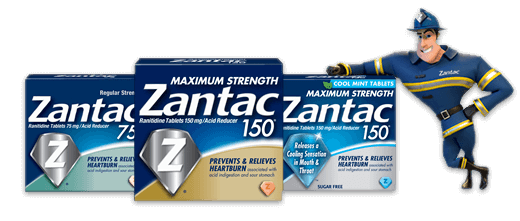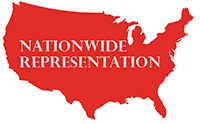The Food and Drug Administration requested the removal of Zantac and ranitidine products from the U.S. market in April 2020 due to contamination by N-Nitrosodimethylamine (NDMA). The Environmental Protection Agency and the International Agency for Research on Cancer classify NDMA as a probable carcinogen.
Unfortunately, for many people who used Zantac or its generic counterparts for months or years, the carcinogen exposure was enough for them to develop cancer. Now, people with cancer diagnoses relating to Zantac use are taking action and filing claims against the large pharmaceutical manufacturers, and our California Zantac lawsuit attorneys at Nadrich Accident Injury Lawyers fight for full compensation for our clients in these cases.
Call us today for a free consultation if you or a loved one received a cancer diagnosis after using Zantac. We can assess your legal rights at no cost and advise you whether you can join the Zantac claims. You may be eligible for financial compensation, and we only collect a fee for our services if we obtain a recovery for you, so you have nothing to lose by contacting us today.
Do I Qualify for a Zantac Lawsuit?

You may seek financial recovery in a Zantac lawsuit if:
- You ingested over-the-counter, name-brand prescription, or generic prescription Zantac.
- You used Zantac for at least three months.
- Your doctor diagnosed you with one of the forms of cancer we are accepting cases for.
- You were under the age of 75 at the time of your cancer diagnosis.
- Your cancer diagnosis occurred at least three months after you started taking Zantac.
We are accepting cases involving the following types of cancer:
- Bladder cancer
- Breast cancer
- Colorectal cancer
- Esophageal cancer
- Gastric cancer
- Stomach cancer
- Liver cancer
- Lung cancer
- Pancreatic cancer
- Prostate cancer
Many people do not tie their cancer diagnosis to a particular factor, as cancer can happen to many people for seemingly no reason. However, knowing that a simple heartburn medication greatly increased your risk of or directly led to certain cancer types is devastating. You face a long road ahead during your cancer treatment and recovery, and you deserve full compensation for your losses from negligent manufacturers.
Zantac Lawsuit Damages
Plaintiffs in Zantac lawsuits can obtain financial recovery for:
- Past and future medical bills
- Physical and mental pain and suffering
- Loss of wages and loss of earning capacity
- A loss of enjoyment of life
- Loss of life (in a wrongful death lawsuit)
- Punitive damages
The losses from cancer can overwhelm you. You need to pay the expenses of your initial testing and diagnosis, treatment costs for chemotherapy, radiation, or surgeries, and lost income from missing work during your treatment. Further, the side effects of cancer and its treatments are debilitating for many people, and you often experience months or years of pain and suffering. In tragic cases, a loved one might lose their Zantac-related cancer battle and pass away.
No matter what your situation might be, you deserve full compensation for your economic and intangible losses stemming from Zantac and cancer. But who knows how to put a dollar amount on the devastating experience of cancer or losing a loved one to cancer? Our California Zantac attorneys know how to examine your situation and losses to determine how much you deserve in damages for your cancer.
Elements of a Zantac Lawsuit
A Zantac lawsuit in California may recover damages based on several causes of action, including those below.
Strict Liability—Failure to Warn

Drug manufacturers are strictly liable for damages caused by their drugs in California, when a drug’s known or knowable risks harm a consumer and the manufacturer fails to warn the consumer about the risks, under CACI No. 1205.
Dr. Silvio de Flora of the University of Genoa published Ranitidine experiment results in 1981. These results noted “toxic and mutagenic effects” when exposing ranitidine to nitrates and human gastric fluid. Dr. de Flora noted these effects may occur because of the “formation of more than one nitroso derivative under our experimental conditions.” NDMA is a nitroso derivative.
The Lancet saw a response to these experimental results from GlaxoSmithKline (GSK) two weeks later. This response demonstrates GSK knew that NDMA could form when exposing ranitidine to human gastric fluid.
By 1987, many studies demonstrated that ranitidine-containing products, like Zantac, had a problem with carcinogenic nitroso compounds. A lawsuit claims GSK responded to these studies with a “rigged” study finding no NDMA in the gastric contents of people who used ranitidine medication, such as Zantac. The lawsuit claims all gastric samples containing ranitidine were not part of the study and it failed to use an accurate analytical system.
“Without the chemical being present in any sample, any degradation into NDMA could not, by design, be observed,” the lawsuit says, claiming GSK knew or should have known that the study was inadequate.
Parties knew that NDMA is a probable carcinogen since at least 1979 when a news article claimed, “NDMA has caused cancer in nearly every laboratory animal tested so far.” A lawsuit claims that some consumer products with unsafe NDMA levels were subject to recall by manufacturers as early as 1980.
Zantac lawsuits may recover damages based on strict liability and a failure to warn since it appears that the makers of Zantac knew the drug likely contained NDMA, knew NDMA was dangerous to users, and failed to warn consumers about the danger their product posed.
Strict Liability—Design Defect

Drug manufacturers are strictly liable for damages that their drugs cause in California when their drugs are unreasonably dangerous when manufactured correctly by design and cause harm to consumers. This strict liability is set out in California civil jury instruction CACI No. 1203.
Testing lab Emery Pharma discovered that NDMA gradually forms over time in samples of ranitidine exposed to heat.
The lab exposed ranitidine to a high temperatures, with these results:
- The sample exceeded the FDA’s daily intake limit for NDMA of 96 nanograms after only five days of exposure to 158 degrees Fahrenheit.
- The sample contained 142 nanograms of NDMA after 12 days at 158 degrees.
- Another sample of ranitidine exposed to 77 degrees Fahrenheit contained 25 nanograms of NDMA after only 12 days.
This means that ranitidine, after only 48 days of storage in a 77-degree warehouse, could contain more NDMA than the FDA’s daily intake limit.
The fact that NDMA is forming in Zantac after even mild heat exposure means that the source of the NDMA contamination doesn’t come from a manufacturing defect. Zantac (ranitidine) is defective by design because the probable carcinogen NDMA forms in it over time even when the drug is manufactured correctly.
More recent studies also linked Zantac to cancer and NDMA formation. A recent study found that Zantac increased bladder cancer risk by 22 percent and that taking Zantac for three years or more increased bladder cancer risk by 43 percent.
Negligence
A drug manufacturer in California is negligent under CACI No. 1221 when it fails to use the amount of care in making a product that a reasonably careful manufacturer would use in similar circumstances to avoid exposing others to a foreseeable risk of harm. A reasonable drug manufacturer would warn consumers about cancer risks if they knew or should have known that their drug might contain a probable carcinogen.
Zantac lawsuits allege that Zantac makers knew their drugs might contain NDMA, knew NDMA was dangerous, and failed to warn consumers about the danger. One lawsuit even accuses Zantac makers of “deliberately” refusing “to test Zantac products because they knew that the chemical posed serious health risks to humans.”
Zantac lawsuits may recover damages based on negligence because it is negligent to not warn consumers of a risk that the company knows or should know about.
The Right California Zantac Lawyers for Your Case

The dangerous drug specialists at Nadrich Accident Injury Lawyers successfully handle thousands of claims regarding the side effects of dangerous drugs. We have a history of six and seven-figure recoveries in dangerous drug cases, including a $14,250,000 recovery for a nine-year-old girl who developed Stevens-Johnson Syndrome after taking Children’s Motrin. We also recovered $5 million for a client who developed primary pulmonary hypertension after taking a mainstream diet drug she presumed to be safe.
We are handling Zantac side effect cases throughout California and nationwide.
Our battle-tested attorneys offer a no-fee promise, which means that we only charge a percentage of your recovery if – and only if – we obtain a recovery for you. No recovery, no fee. It’s that simple.
Call Nadrich Accident Injury Lawyers today for your free consultation if you or a loved one took Zantac and subsequently received a cancer diagnosis. You may also write to us using our live chat feature or our contact page to see if we can help you pursue a financial recovery.

